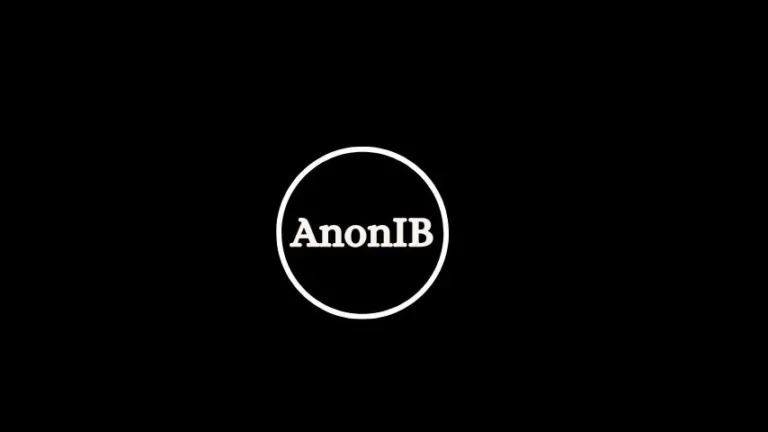In the vast and often unregulated corners of the internet, few platforms have generated as much controversy and ethical debate as AnonIB. Short for “Anonymous Image Board,” AnonIB was a network of websites that served as a stark example of the dark potential of online anonymity. This article delves into what AnonIB was, how it operated, the profound controversies it sparked, and the complex questions it raised about privacy, consent, and free speech online.
What Was AnonIB?
AnonIB was an anonymous imageboard, a type of website that allowed users to post images and comments without registering an account. Its structure and culture were heavily inspired by larger, more general imageboards like 4chan, but with a specific and notorious focus.
The platform was organized into various boards, typically categorized by geographic location (e.g., “Texas,” “California,” “Europe”) or by specific colleges and universities. Users could visit a board dedicated to their city or school and post images and messages completely anonymously.
The Core Mechanics and Culture of AnonIB
Understanding AnonIB requires looking at its fundamental operating principles:
- Complete Anonymity: Unlike social media platforms that require real identities, AnonIB users were identified only by a randomly generated post number. This created an environment where users felt free to post content without social repercussion.
- User-Generated Content: The entire content of the site was driven by user submissions. This included everything from mundane local gossip to the explicit and non-consensual content that became its trademark.
- “Trigger”-Based Threads: The site was organized into threads, often initiated by a single image or a question. Users would then “reply” to this thread, creating a chain of related comments and images.
The Central Controversy: Non-Consensual Content and Exploitation
While anonymity can empower free speech and whistleblowing, on AnonIB, it primarily facilitated harmful and illegal activities. The platform became infamous as a hub for:
- Non-Consensual Intimate Imagery (NCII): This was the most significant and damaging aspect of AnonIB. Users would post explicit photos and videos of individuals—often former partners, acquaintances, or even strangers—without their consent. This practice, commonly known as “revenge porn,” has devastating psychological and social consequences for victims.
- Doxing: Users would often accompany images with personally identifiable information (PII) such as the subject’s full name, social media profiles, address, or phone number, inviting harassment and stalking.
- Harassment and Cyberbullying: The boards were rife with threads dedicated to ridiculing, threatening, and harassing specific individuals.
The geographic and school-specific nature of the boards made the harassment feel more immediate and terrifying for victims, as they knew the perpetrators were likely people from their own community.
Legal Challenges and Takedowns
AnonIB’s operations placed it in direct conflict with the law in many countries. The distribution of non-consensual intimate imagery is a criminal offense in numerous jurisdictions, including the United States, where many of its users were based.
Over the years, the original AnonIB site and its various domains faced repeated legal pressure and were frequently shut down. However, like many sites on the fringes of the internet, it exhibited a “hydra effect”—when one domain was taken down, new ones would often pop up to replace it, hosted in countries with more lenient internet laws.
Despite these resilience, major crackdowns by law enforcement and pressure from hosting providers have significantly disrupted its operations. The original, centralized AnonIB network is largely fragmented and less accessible than it was at its peak.
The Lasting Impact and Ethical Legacy
The existence and notoriety of AnonIB have had a lasting impact on the digital landscape:
- Increased Legal Awareness: The outrage surrounding AnonIB and similar sites helped spur the creation and strengthening of laws specifically targeting non-consensual pornography in many states and countries.
- Highlighting the Dark Side of Anonymity: AnonIB serves as a case study in the ethical dilemma of online anonymity. While a vital tool for free expression in oppressive regimes, it can also be a shield for predators and harassers.
- Empowerment of Victim Support Networks: The fight against AnonIB galvanized organizations and activists dedicated to helping victims of NCII. Groups like the Cyber Civil Rights Initiative have worked tirelessly to provide resources for victims and advocate for stronger legal protections.
- A Cautionary Tale for Internet Users: AnonIB stands as a stark reminder of the permanence and potential misuse of digital content. It underscores the critical importance of digital literacy and caution when sharing intimate images, even with trusted individuals.
Conclusion: A Dark Chapter in Internet History
AnonIB represents one of the most troubling manifestations of internet culture. It was a platform that weaponized anonymity to cause real-world harm, exploiting and harassing individuals for the amusement of its users. While its presence has been diminished by legal and social pressure, the underlying issues it represents—non-consensual content, online harassment, and the ethics of anonymity—remain pressing challenges.
The legacy of AnonIB is a painful one, but it has also fueled a necessary and ongoing conversation about accountability, consent, and the kind of digital world we want to build. It serves as a powerful reminder that the freedom of the internet must be balanced with a profound respect for the safety and dignity of others.


